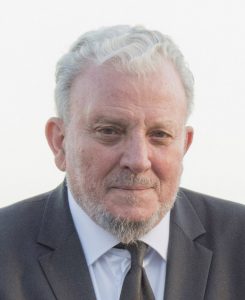Kiko Argüello

Francisco José Gómez Argüello Wirtz, was born in León on January 9th, 1939. He studied Fine Arts at the San Fernando Academy in Madrid and in 1959 was awarded the Extraordinary National Prize for Painting. After a deep existential crisis, he went through a serious conversion that led him to dedicate his life to Jesus Christ and the Catholic Church.
In 1960, together with the sculptor Coomontes and the glassmaker Muñoz de Pablos, he founded the research and development group for Sacred Art Gremio 62. He had exhibitions in Madrid (the National Library), and in 1964 he was chosen by the Ministry of Culture to represent Spain at the Universal Exhibition of Sacred Art in Royan (France). In Holland (1965), he exhibited some of his works at the Nouvelles images gallery.
Convinced that Christ is present in the suffering of the innocent and the last of the earth, he went to live among the poor, moving in 1964 to a shack in Palomeras Altas, a poor neighbourhood on the outskirts of Madrid. There he met Carmen Hernández and together, propelled by this environment of the poor, they discovered a way to preach to the people with a kerygmatic-catechetical synthesis which resulted in the formation of a small Christian community. This community, in which the love of the crucified Christ became visible, became a “seed” which, thanks to the then Archbishop of Madrid, His Grace Casimiro Morcillo, was sown in the parishes of Madrid and later in Rome and in other nations.
After his conversion, he put his art at the service of the Church. He did so specifically through painting, music, architecture and sculpture; these last two serve to promote a “new aesthetic” that leads man to faith.
As a painter, he has done important works all over the world. In Spain these are above all in Madrid – the Crown of Mysteries in the Cathedral stands out – and in Murcia. In Italy he has painted a large mural in the Redemptoris Mater Seminary of Rome. His works are also in Roman churches, such as Canadian Martyrs, and in cities such as Piacenza and Perugia. Another example is the great Last Judgment mural in the Domus Galileae (Israel), a center for meetings located on the Mount of Beatitudes and which, by the express desire of John Paul II, also has the purpose of building bridges with the Jewish people.
As an architect he has developed a new model of parish and of seminary based on the new aesthetic. It features stained glass windows created by him. There are examples in Spain, Italy, Nicaragua, the United States, Finland, the Dominican Republic and some Asian and African countries. Among them, the Domus Galileae has a particularly prominent place.
During these years, Kiko Argüello has developed a musical aspect for the Neocatechumenal Way. Since the time he went to the shanty town of Palomeras Altas with a Bible and a guitar, he has composed more than 300 songs which are compiled in HE ROSE FROM DEATH – Songs for the Neocatechumenal Communities. Many are presently sung in numerous parishes around the world and others have been sung on many occasions in the presence of various Popes. Kiko has devised musical accompaniments for them, using a great number of instruments.
In 2010, Argüello formed the Symphony Orchestra of the Neocatechumenal Way and composed the work The Suffering of the Innocent, which describes through music the pain of the Virgin at the foot of the cross. After being performed in Israel before various authorities and 200 bishops, Jewish people present were deeply impressed and acknowedged that they felt that their suffering because of the Shoah (the Holocaust) was understood by the Church and that they felt loved by her. From then on this Symphony has been used as a bridge of dialogue between the Jewish people and the Catholic Church. Since its composition, it has been performed in the Vatican (on one occasion before Benedict XVI) , Jerusalem, Bethlehem, Madrid, Paris, Tokyo, New York, Chicago, Boston, Düsseldorf and Auschwitz, among other places.
Kiko Argüello is also the author of two books (the originals are in Spanish). In 2012 he published The Kerygma: in the Shantytown with the Poor and in 2016 Annotations 1988-2014.